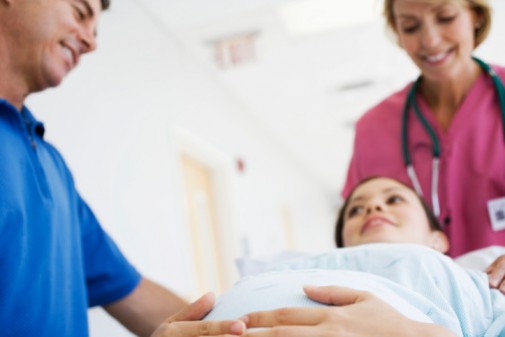Why the Duchess’ natural birth has women talking

With Kate Middleton’s life a continuous headline, her decision to forgo pain medication during labor has many women talking about the pro and cons of going ‘au natural.’
Some say the Duchess’ yoga and meditation may have helped her ease through the birth and helped her recover more quickly. So what available pain meds did she pass up?
Dr. Marie Cabiya, obstetrician and gynecologist with Advocate Medical Group in Chicago, provides insight on some of the options moms have during childbirth.
“Pain in labor can be a widely variable experience for each woman depending on patient perception as well as the baby’s size, position and size of the mother’s pelvis,” she says.
Dr. Cabiya says that women who opt for a pain medication-free birth may oftentimes use one or a combination of techniques that include: relaxation or breathing techniques, acupuncture or acupressure, massage or hypnosis.
While the effectiveness of these interventions is variable, their risks (if any) are usually minimal, she says.
“Some women decide to use these techniques as a means to cope with the pain of labor, others find it helpful to use those in combination with pain medications,” Dr. Cabiya says. “The most commonly used types of pain medications during birth are epidural (a type of regional anesthesia) or systemic analgesics (pain medication delivered through an IV).”
According to the American College of Obstetricians and Gynecologists, an epidural is the most often used a type of regional anesthesia and provides the most pain relief in labor for the majority of women. It gives pain relief to your lower torso and lower extremities.
Dr. Cabiya says a labor epidural is performed by giving an injection in your back and a very thin tube is left in place in order to provide more pain medication as needed during the entire labor and delivery process.
“You remain awake and alert during labor and can move but are not allowed to walk around because you may be at risk for falling,” she says.
Dr. Cabiya notes there are certain risks associated with an epidural which should be discussed with your provider. She says that some of those risk include: sudden drops in blood pressure or a significant headache referred to as a ‘spinal headache;’ possible increase of labor duration as well as the pushing process; and some studies remain controversial as to whether the use of an epidural can increase the likelihood of a cesarean section.
Another form of pain medications are systemic analgesics that are administered intravenously. Dr. Cabiya says these will lessen the pain and make you drowsy but you will remain conscious. These type of medications cannot be given shortly before delivery because they may slow the baby’s breathing at birth, she says.
“While the decision to use or forego the use of pain medication in labor can change during the process, it is a good idea to discuss your wishes with your doctor both throughout the pregnancy as well as during the labor experience,” Dr. Cabiya suggests.
Dr. Cabiya recommends that all pregnant women take a childbirth preparation class. “But it is particularly important for those women who desire a medication free birth so that they can establish a plan for dealing with labor pains.”
Related Posts
Comments
6 Comments
About the Author
Sarah Scroggins, health enews contributor, is the director of social media at Advocate Health Care and Aurora Health Care. She has a BA and MA in Communications. When not on social media, she loves reading a good book (or audiobook), watching the latest Netflix series and teaching a college night class.


















It’s also important to note that Kate Middleton is a well-nourished woman who is physically active and has a normal weight for her height. Those factors can be really helpful in helping a woman labor and deliver without pain medication. When a woman’s body is not accustomed to difficult physical work, and when she has excess pounds of fat weighing her down, it *can* make labor a much longer and more challenging process. The first step toward having a natural and unmedicated birth is to become well-nourished and physically fit at a normal weight *before* becoming pregnant.
Hi Ariel – that is such a great point! This is a good topic to tell on it’s own!
I totally agree Ariel! Thank you for pointing that out. SO many people in the US are overweight or obese.
Thank you for publishing a great article. Dr. Cabiya has mentioned great techniques and comfort measures that women have the option to use if prepared and practiced prenatally. A few other measures that are highly effective are movement in labor, hydrotherapy such as a shower, and heat and cold therapy. There is great research that shows being fit and healthy improves your chances of a healthy delivery with less interventions. As a perinatal educator for Advocate I am so excited to hear that Kate had an unmedicated birth. I actually wondered that when I heard of her birth. I can’t wait to discuss this in class!
it is amazing how many people are looking at natural birth differently now ever since kate has done it. Good for here. Maybe people will start to understand how birth is supposed to be done 🙂
The thing that we have to also realize is that natural birth aren’t really something we should all go crazy over. natural births have been done (if you take the last 6000 years) many many more times than a medicated birth to this day.
http://www.laboraide.com/article/1531-understanding-the-different-types-of-pain-relief-during-birth